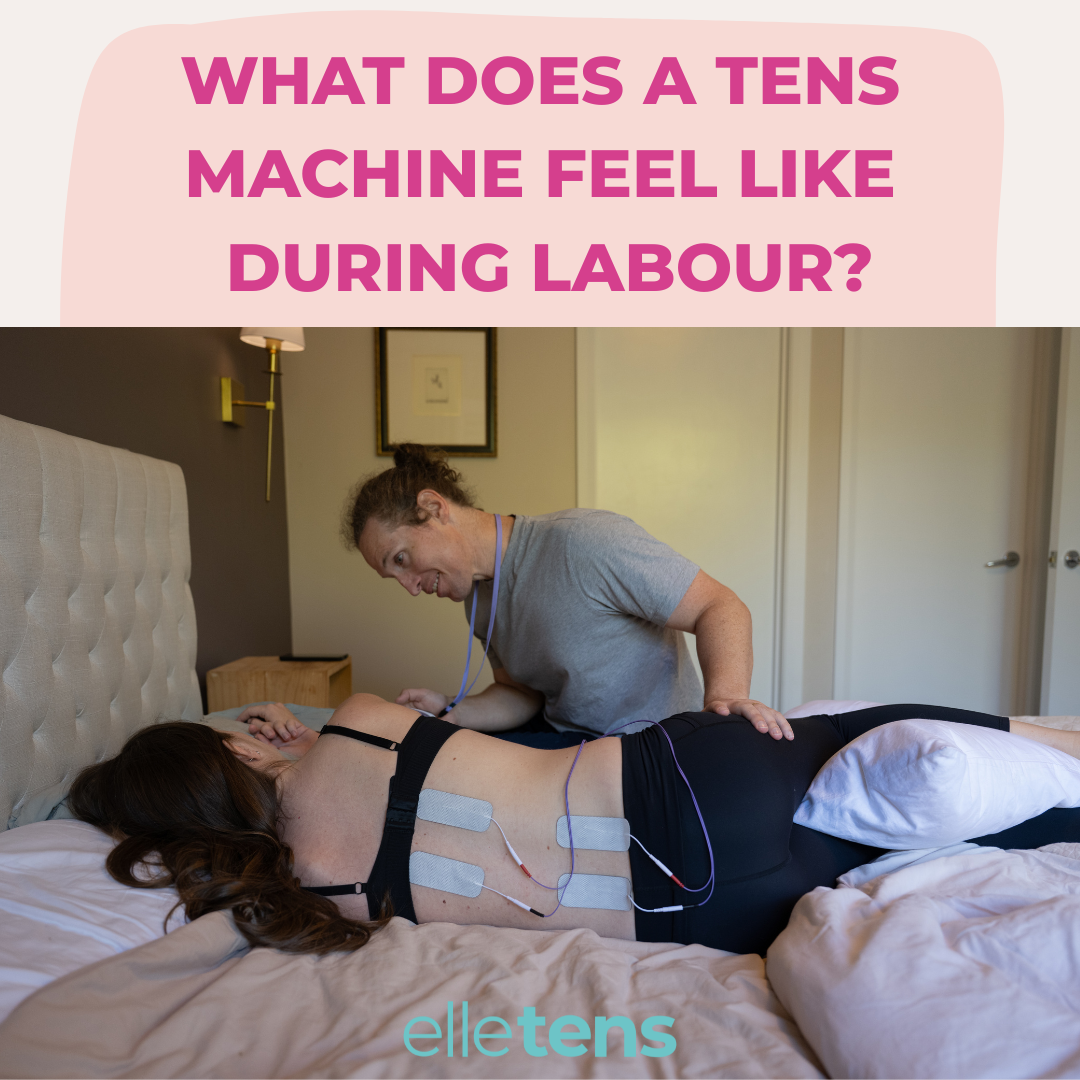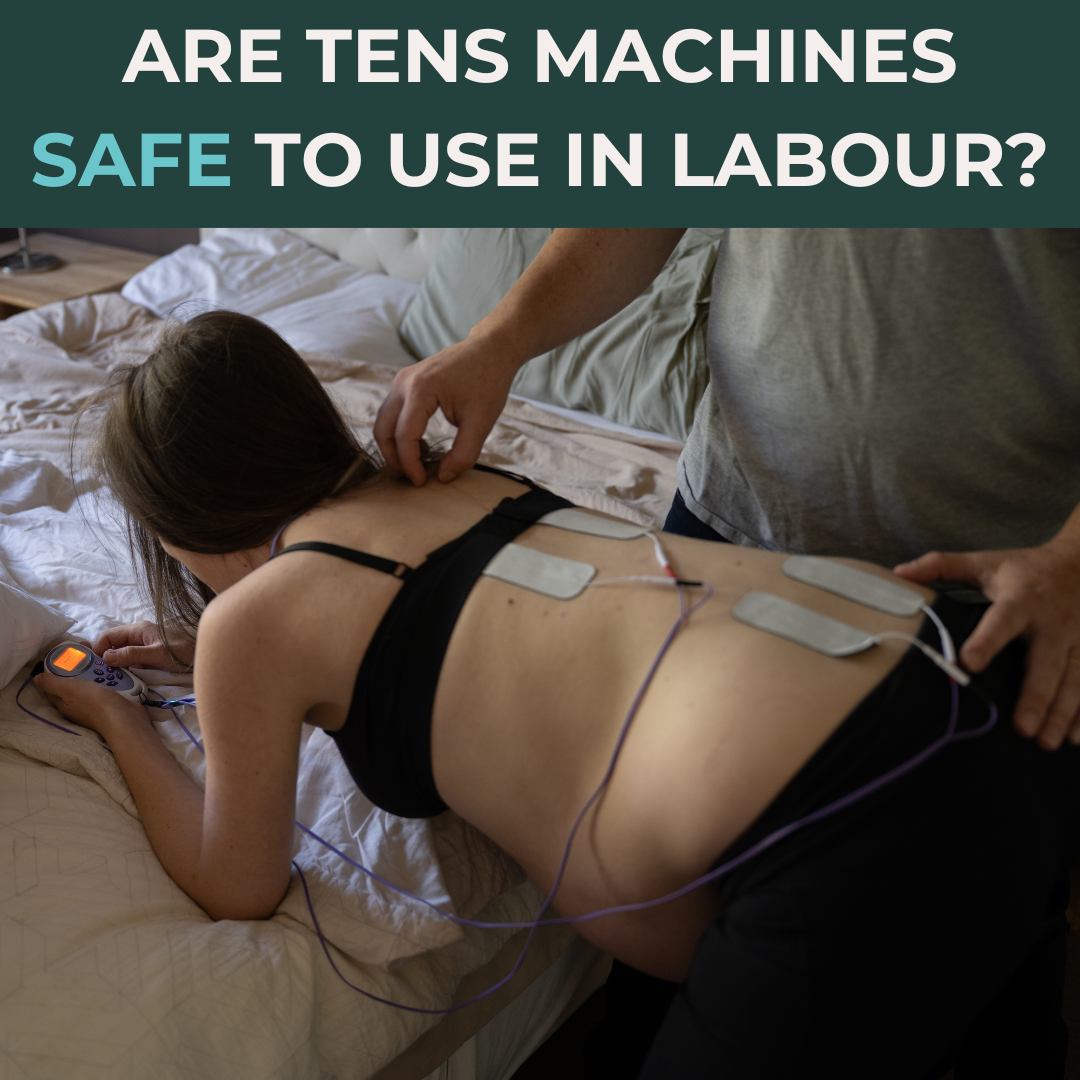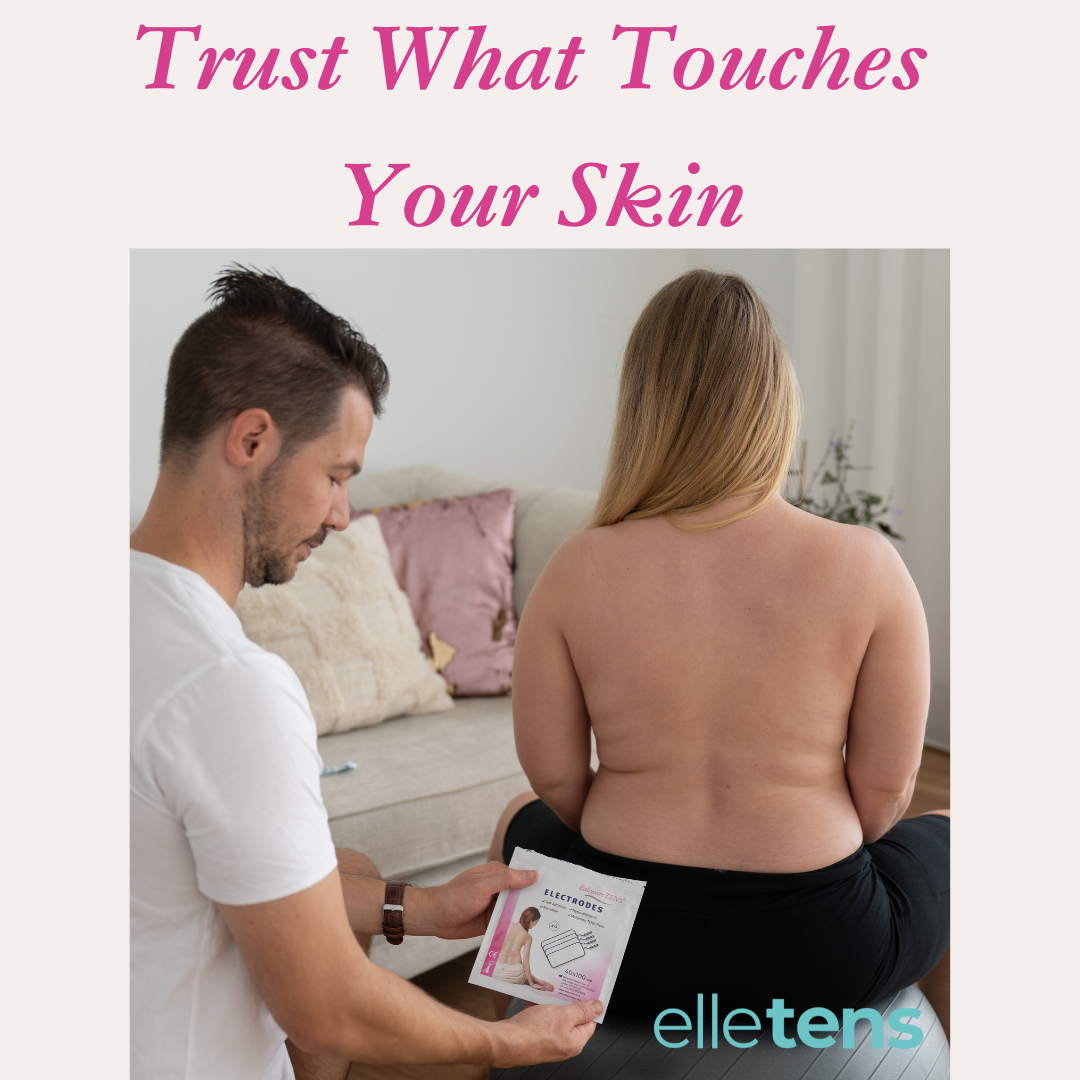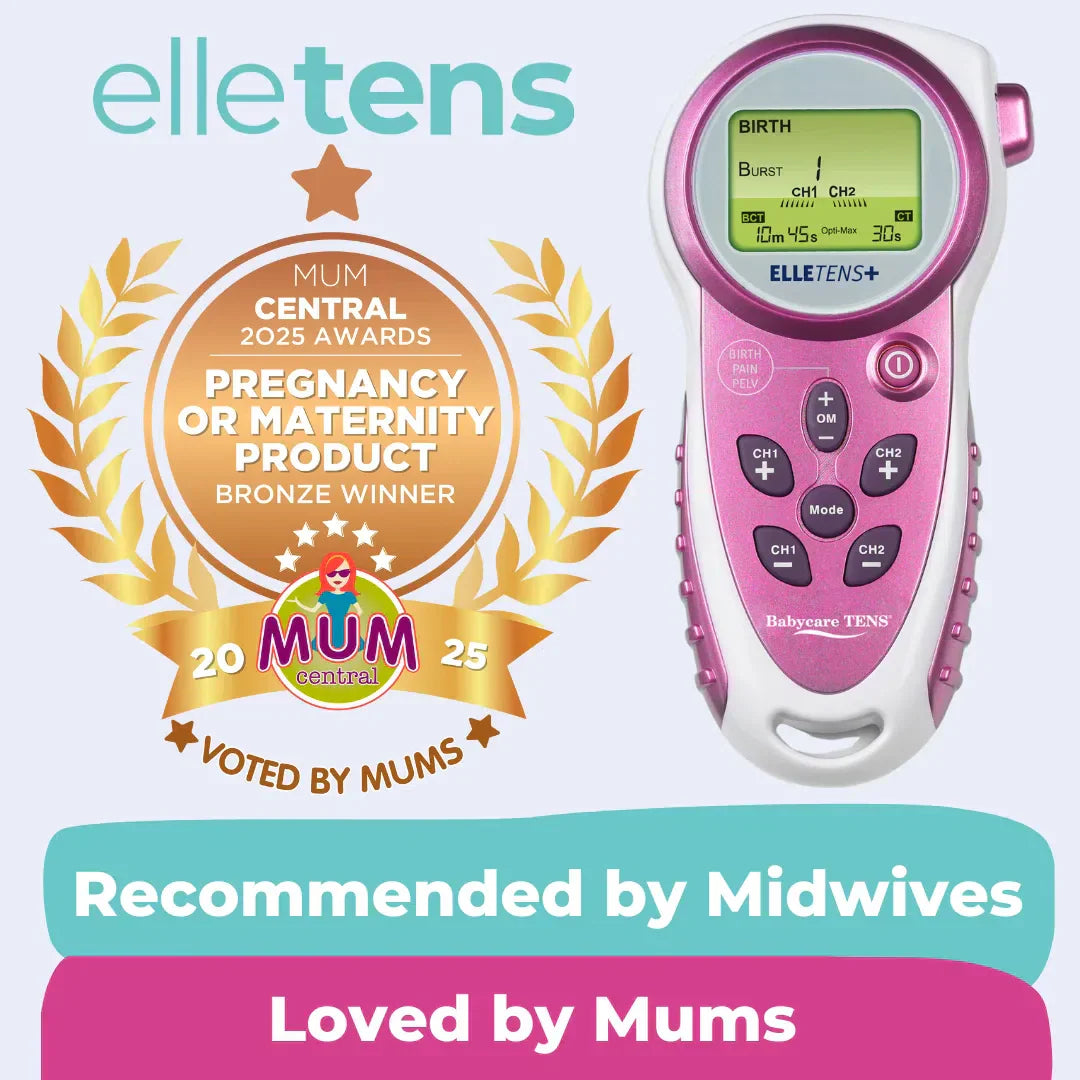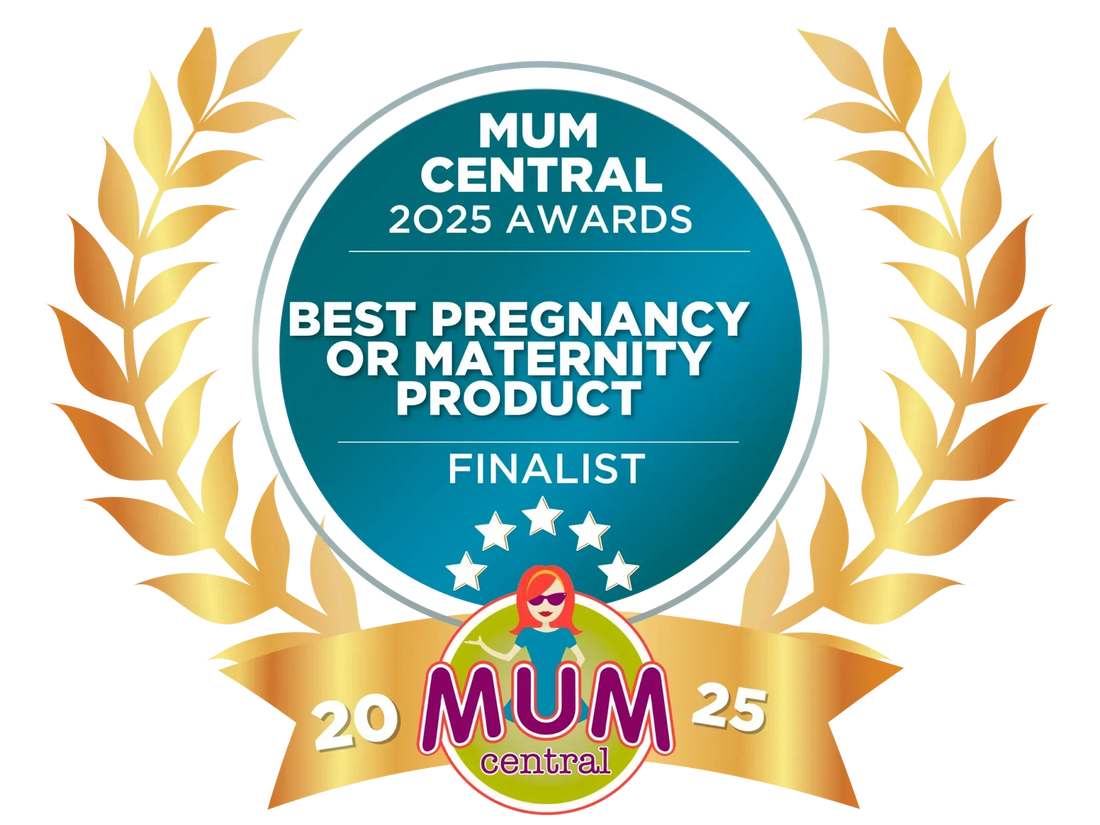Learn
What Does a TENS Machine Feel Like During Labour?
What Does a TENS Machine Feel Like During Labour? You’ve heard of TENS machines as a natural way to manage pain during labour, but what does a TENS machine feel like during labour, really? At Elle TENS Australia, we speak to hundreds of expectant parents every week, and one of the most common questions is:“What will it feel like when I use the TENS during labour?” Let’s break it down so you feel confident, prepared, and calm on the big day. What Does a TENS Machine Feel Like? A Gentle Pulsing Sensation When you first turn on the Elle TENS, you’ll feel a gentle tingling or pulsing sensation in your lower back. Most people describe it as: A light buzzing or vibration A rhythmic tapping or fluttering A soothing, massage-like pulse It’s not painful. In fact, many users say it’s relaxing and even enjoyable. You can adjust the intensity to your comfort level using the "+" and "–" buttons. This sensation is designed to intercept pain signals before they reach the brain and stimulate the release of your body’s natural pain relievers — endorphins. The Boost Button: Extra Relief When You Need It Most As your labour progresses, contractions intensify. That’s where the Boost button comes in. When a contraction starts, simply press Boost to change the pulse pattern to something stronger and more focused. This helps: Block out contraction pain Distract your brain from the intensity Give you a greater sense of control Once the contraction passes, press Boost again to return to the original setting. This feature works in rhythm with your body, giving you power in the moment. Still wondering what a TENS machine feels like during labour when contractions are at their peak? Many women describe it as an empowering tool, something that lets them ride the waves of each contraction with greater confidence. Real Experiences: What Other Parents Say Here’s how some Elle TENS users describe the sensation during labour: 💬 “It felt like a warm, pulsing massage across my back — really calming.”💬 “It was just enough to take the edge off. I didn’t need anything else for hours.”💬 “The Boost button was my best friend during contractions. I could time it perfectly and feel more in control.” While every labour is different, the feedback is overwhelmingly positive, mainly when the TENS is used from early labour. Tips for the Best Experience To get the most out of your Elle TENS: Start early: Use it as soon as you feel contractions beginning. Practice beforehand: Familiarise yourself with the controls in the weeks leading up to your due date. Use genuine electrodes: Quality pads ensure even sensation and safety. Pack it in your hospital bag: Be ready to go by 36 weeks, just in case. Ready to Experience It for Yourself? Whether you’re planning a natural birth or want to delay other interventions, the Elle TENS can be a powerful part of your pain management toolkit. Hire or buy your Elle TENS today from Australia’s most trusted TENS provider. Delivered straight to your door and ready when you need it most.
Learn moreAre TENS Machines Safe to Use During Labour?
If you’re exploring drug-free options for pain relief during birth, you’ve likely come across TENS machines. But one common question we hear is:“Are TENS machines actually safe to use during labour?” The short answer is yes. When used correctly and with genuine electrodes, TENS machines are a safe, proven, and trusted choice for labour support. Here's what you need to know. What Is a TENS Machine? TENS stands for Transcutaneous Electrical Nerve Stimulation. It works by sending small electrical pulses through electrode pads placed on your lower back. These pulses help: Block pain signals travelling to the brain Trigger the release of endorphins (your body’s natural painkillers) Offer a distraction and a sense of control during labour At Elle TENS, we supply the Elle TENS 2 and Elle TENS Plus, both specifically designed for maternity use. Is It Safe for You and Your Baby During Labour? Yes — when used as directed, TENS machines are safe for both mother and baby. They are: Drug-free, so no side effects or risks of drowsiness Non-invasive, with no internal devices or injections Completely under your control, thanks to the handheld design and boost button Widely recommended by midwives and physiotherapists across Australia TENS is ideal for early labour, whether you're at home or in hospital, and is a great way to delay or reduce the need for stronger interventions. Are There Any Situations Where TENS Shouldn’t Be Used? TENS should not be used: Before 37 weeks of pregnancy, unless under medical supervision On broken or irritated skin If you have a pacemaker or certain heart conditions (always check with your doctor) In the shower or bath (the unit is not waterproof) If you're unsure, speak with your midwife or care provider, but TENS is a safe and practical choice for most low-risk pregnancies. Why Genuine Electrodes Matter for Safety Using genuine Babycare electrodes, which come with every Elle TENS hire or purchase, is key for safe and effective use. These electrodes are: Latex-free and designed specifically for maternity use Packaged in sterile, barcoded pouches (not ziplock bags) Backed by rigorous quality control and Australian safety standards Counterfeit or non-genuine electrodes can reduce effectiveness and may irritate the skin or come unstuck during use. Feel Confident and In Control TENS machines are a safe, empowering option for managing labour pain, especially in the early stages. If you're looking for a low-risk, natural pain relief tool that gives you control, Elle TENS is a trusted choice for thousands of Australian parents. Ready to book your hire or buy your unit?Explore your options on our website and get birth-ready with confidence.
Learn moreWhen Should I Book My Elle TENS Machine Hire?
Using a TENS machine during labour is a smart and empowering way to manage pain naturally. One of the most common questions we hear is:“When should I book my TENS hire?” The best time to book your Elle TENS hire is around 30 weeks of pregnancy. Here’s why that timing matters, and how the process works from booking to return. Why Use a TENS Machine for Labour? Elle TENS is one of the most popular choices for labour pain relief in Australia. It’s a handheld, drug-free option designed specifically for maternity use. The Elle TENS 2 unit provides advanced features such as: Optimax technology for extra pulse power during contractions Boost button for instant pain relief control Pre-set modes tailored for labour A timer to help track contractions Using a TENS machine early in labour helps maximise its effectiveness, which means having your hire kit ready beforehand. When Should You Book Your Hire? We recommend booking your TENS hire between 30 and 32 weeks of pregnancy, with the goal of having it delivered by 36 weeks — around four weeks before your due date. This timing ensures: Reliable delivery to your home Guaranteed availability during busy seasons Time to read the instructions and feel confident using the unit Peace of mind knowing it’s packed and ready in your hospital bag If you ever need to extend your hire or arrange an earlier delivery, just get in touch — we’re always happy to accommodate your needs. What’s Included in the Elle TENS 2 Labour Hire Kit? Each hire kit includes everything you need for safe and effective use: 1 x Elle TENS 2 maternity TENS unit 1 set of genuine Maternity Babycare/Elle TENS electrodes 2 lead wires 1 Lanyard 2 brand new AA batteries Easy to follow instruction card Reply paid Aust Post label for easy, hassle-free returns Elle TENS Wetbag, yours to keep, great for popping on your stroller for those emergency nappy changes You’ll also receive a copy of A Women’s Guide to Drug Free Pain Relief, by Dr. Gordon Gadsby. It’s full of useful information and helpful tips so you can get the most out of your TENS machine, including TENS techniques, acupressure and acupuncture without needles. Returning Your Unit Returning your Elle TENS hire is simple and stress-free. Just follow these quick steps: Place all items back into the original box your hire arrived in. Remove the old label and replace it with the prepaid return label we’ve included. Drop the satchel into any red Australia Post box or outlet — no printing or extra postage required. Once you're done, don’t forget to tag us @elletensau and share your birth story. We love hearing how Elle TENS supported your journey! "The Elle TENS team made this whole process so seamless and easy. Everyone was so generous and kind to get a machine to me when I needed it and beyond that, the machine made a huge difference to my birth experience. I felt much more in control of my pain management and i used the machine right until the end. It was so easy to use that we figured it out when I went into labour (but I wouldn’t recommend that 😂) Highly recommend giving this a try. I was quite anxious about the experience and ElleTENS definitely helped give me a sense of control over my pain and manage my labour." - Bec Booking your TENS hire early ensures you have everything ready when the time comes. It removes the stress of last-minute ordering and allows you to focus on preparing for your birth experience. Visit our Elle TENS Labour Hire page to secure your hire online. Fast, simple and reliable — the way birth prep should be.
Learn moreWhy It Matters to Use Genuine TENS Electrodes
When preparing for labour, using a TENS machine can be an empowering, drug-free way to manage pain. But did you know that using the right electrodes — specifically genuine maternity-grade electrodes — is crucial for safety and effectiveness? Let’s explain why genuine electrodes matter and how to spot the difference. What Are Electrodes and What Do They Do? Electrodes are the sticky pads that deliver tiny electrical pulses from the TENS machine through your skin. These pulses help block pain signals to the brain and encourage endorphin release — the body’s natural painkillers. These pads are placed on the lower back over key nerve points for labour use. Because of their vital role, electrode quality can directly affect comfort and performance. What Happens if You Use Generic or Low-Quality Electrodes? While it may be tempting to buy cheap pads online or from other suppliers, here’s what can go wrong: ❌ Inconsistent adhesion: They may peel off mid-contraction or lose stickiness quickly ❌ Reduced conductivity: Weak or uneven current = less effective pain relief ❌ Skin irritation: Low-grade gel may cause rashes, burns or allergic reactions ❌ Incompatibility: They may not fit securely with your Elle TENS machine ❌ Warranty voided: Any electrodes that are used with the Elle TENS that are not genuine will void your device’s warranty This is especially risky during labour, when you want peace of mind, not troubleshooting! Why Use Genuine Elle TENS Electrodes? At Elle TENS Australia, all our hire kits include genuine Babycare Maternity electrodes, explicitly designed for labour. These pads are: ✔️ Latex-free and hypoallergenic ✔️ Designed for sustained use (up to 30 hours!) ✔️ Perfectly sized for optimal lower back placement ✔️ Compatible with your Elle TENS unit for peak performance ✔️ Passed medical testing and are authorised to be used with Elle TENS. If you’re buying your machine, we recommend adding an extra set — they’re great to have on hand and ensure consistent results when needed. How to Spot Genuine Electrodes To ensure you’re getting authentic, maternity-safe electrodes, look for these signs: ✅ Branded packaging (Babycare or Elle TENS) — sealed and professional ✅ Barcode and product label – often missing on counterfeit or generic versions ❌ No ziplock bags or unbranded pouches – these are not genuine and may be unsafe ✅ Purchased directly from Elle TENS Australia or an approved retailer When in doubt, contact us — we’re happy to confirm whether your pads are the real deal. How to Order Genuine Replacements Whether hiring or owning a unit, you can purchase authentic electrode sets directly through our Shop. Look for the Babycare or Elle TENS branding to ensure you get the real thing. Final Word Using a quality TENS machine is only part of the equation—don’t overlook the pads! Your comfort, safety, and results depend on them. Stick with what’s trusted. Stick with what works. Stick with genuine.
Learn moreHiring vs Buying a TENS Machine – What’s Right for You?
Preparing for birth involves many decisions, and one common question we hear is:Should I hire or buy my TENS machine? At Elle TENS, we offer both options, each with advantages depending on your situation. This guide will help you choose the best fit for your birth plan, budget, and lifestyle. Why Use a TENS Machine in Labour? A TENS machine offers drug-free, side-effect-free pain relief, especially effective in early labour. It helps block pain signals and encourages endorphin release while giving you control with features like our Boost Button. Option 1: Hiring a TENS Machine Best if: You’re planning to use TENS for a single birth You want a more affordable short-term option You prefer a convenient, all-inclusive package What’s included when you hire from us: Elle TENS 2 TENS Machine – inbuilt contraction timer & boost button 1 set of genuine Maternity Babycare/Elle TENS electrodes Reply paid Aust Post label for easy, hassle-free returns Elle TENS Wetbag, yours to keep A copy of A Women’s Guide to Drug Free Pain Relief by Dr. Gordon Gadsby Benefits of hiring: Lower upfront cost Easy returns Ideal for occasional use Option 2: Buying a TENS Machine Best if: You’re planning multiple births or want to loan to friends You like having your device for future pain relief (e.g., period pain, back pain) You have private health cover that might offer a rebate What you get when you buy: A brand-new Elle TENS unit Lifetime ownership 1 set of genuine Maternity Babycare/Elle TENS electrodes Peace of mind – it’s always yours Benefits of buying: Use anytime, even beyond birth Cost-effective for growing families May be claimable via private health insurance Final Thoughts Both hiring and buying have their perks, and you can’t go wrong. At Elle TENS, we’re here to help you feel confident and supported, whichever option you choose. Still deciding?Check out our Hire a TENS or Buy a TENS pages — or message us if you have questions.
Learn moreHow TENS Machines Help with Labour Pain: What You Need to Know
Labour is one of the most powerful and transformative experiences a woman can go through. While no two birth stories are the same, many women seek out ways to manage the intensity of labour without relying solely on medical interventions. One increasingly popular option is the use of a TENS machine, particularly during early labour. In this blog, we’ll explain how TENS works, when to use it, and why so many mums across Australia are choosing Elle TENS for their birth experience. What Is a TENS Machine? TENS stands for Transcutaneous Electrical Nerve Stimulation. A TENS machine sends gentle electrical pulses through electrode pads placed on your lower back. These pulses help interrupt pain signals being sent to the brain, while also stimulating the body to release natural endorphins, your body’s very own painkillers. How TENS Helps During Labour TENS machines are most commonly used during the early stages of labour, when contractions begin and build in intensity. Here’s how they help: ✅ Drug-free relief – No side effects for you or your baby ✅ Control in your hands – Use the machine how and when you want ✅ Stays with you – Portable and easy to use at home or on the way to hospital ✅ Midwife approved – Many healthcare professionals recommend TENS during early labour Elle TENS machines also come with a Boost Button, a feature designed to give an extra surge of relief during each contraction. Press it when a contraction begins, and release it after – it’s that simple. When Should I Start Using a TENS Machine? Most women start using TENS in early labour, when contractions become regular but aren’t yet too intense. The earlier you start, the better it works – this gives your body time to build up endorphins and block pain signals effectively. You should aim to have your TENS machine ready at 36 weeks, so you’re prepared whenever labour begins. Is TENS Safe for Labour? Yes – TENS machines like the Elle TENS are completely safe for use during labour. They’re non-invasive, drug-free, and can be used alongside other pain relief options (gas, epidurals, etc.). However, you should not use a TENS machine in water (e.g., during a bath or water birth) or if you have certain medical conditions like epile psy or a pacemaker – always check with your doctor or midwife. Why Choose Elle TENS Australia? At Elle TENS Australia, we specialise in labour-specific TENS machines, designed with birth in mind. Our machines are: Easy to use (even in active labour) Available to hire or buy Trusted by thousands of mums and endorsed by midwives Covered by some private health insurance plans Final Thoughts TENS machines offer an empowering, natural way to manage labour pain. Whether you’re a first-time mum or planning another birth, using an Elle TENS can help you feel more confident and in control as your labour progresses. 📦 Ready to order your TENS machine?👉 Hire or buy an Elle TENS here
Learn moreWe Won Bronze! Elle TENS Plus Takes Home a Mum Central Award
We are thrilled to share some amazing news, Elle TENS Plus has won Bronze in the 2025 Mum Central Awards for Best Pregnancy/Maternity Product! This recognition means the world to us. It highlights our continued dedication to supporting mums-to-be with reliable, innovative, and trusted pain relief during labour. We couldn’t have done it without you, our incredible community who voted, shared, and supported us throughout the journey. What Mum Central Had to Say “Elle TENS Plus continues to stand out as one of the most loved and effective tools for labour. Mums across the country rave about its simplicity, comfort, and how much relief it brings during contractions.”— Mum Central Awards 2025 Real Words from Real Mums “I don’t know how I would have coped without my Elle TENS Plus during labour. It gave me so much control and relief—I actually felt empowered!”— Sophie, first-time mum “It was a game changer. I recommend Elle TENS Plus to all my pregnant friends now. It helped me stay calm and manage pain naturally.”— Emma, mum of two A Heartfelt Thank You Being recognised in the Mum Central Awards is a huge honour. These awards celebrate brands that truly make a difference in the lives of Australian families. To be ranked among the top is a testament to the trust you place in Elle TENS Plus. What’s Next? We’ll continue our mission to empower women through pregnancy and childbirth with products that are safe, effective, and easy to use. This award motivates us to keep innovating and improving so we can serve you even better. Thank you once again for your support, it truly made this win possible.
Learn moreOur Elle TENS Plus journey for Jules Robinson!
Jules Robinson Recommends Elle TENS for Labour: “It’s a Must-Have!” We are so excited to share that Jules Robinson—TV personality, mum, and star of Married at First Sight—has been singing the praises of the Elle TENS machine for years! In a recent video, Jules shared her incredible experience using Elle TENS through both of her natural births. Her words say it all: “If you’re having a baby, you’ve got to get one of these (Elle TENS). I’ve had two natural births now, and without this I don’t know if I could have done it. Hand on heart, it’s like you’re coaching yourself while you’re giving birth.” Jules has been recommending Elle TENS to anyone and everyone—from podcasts and interviews to everyday chats with fellow mums-to-be. She’s a true believer in what this little device can do during labour. “This Elle TENS machine is just a must-have if you’re giving birth. And if you have health insurance, you also get a 60 to 80% rebate because it’s TGA registered. It is so amazing.” We couldn’t agree more. The Elle TENS is drug-free, safe, and designed to give you control and comfort during one of life’s biggest moments. Whether you’re planning a hospital birth or a home birth, it’s the ultimate support tool. 👇 Watch Jules’ full video below to hear why she swears by Elle TENS 👇
Learn moreVote for Us in the 2025 Mum Central Awards
Exciting News: Elle TENS is a Mum Central Awards Finalist! We are delighted to announce that Elle TENS has been nominated for the Best Pregnancy/Maternity Product category in the 2025 Mum Central Awards! This recognition is a testament to our commitment to supporting expectant mothers with high-quality, trusted products. Why This Recognition Matters The Mum Central Awards celebrate excellence in parenting and maternity products, recognising brands that truly make a difference for families. Being nominated is an honour, and winning would further reinforce the trust and value Elle TENS brings to mothers across Australia. Vote and Win! Cast your vote for Elle TENS and be in the running to win $300 in JB Hi-Fi gift cards! Every vote helps us get closer to winning, and it only takes a moment to show your support. Plus, by participating, you’ll be entered into a draw to win $300 in JB Hi-Fi gift cards! Vote now: Click here to cast your vote Voting is open from Monday, 24th March at 7:00 am AEST until Wednesday, 30th April at 11:59 pm AEST. Don’t miss your chance to support Elle TENS! Key Dates to Remember Voting closes: Wednesday, 30th April 2025 Winners announced: Wednesday, 21st May 2025 via Mum Central We are incredibly grateful for your ongoing support and trust in Elle TENS. Let’s make this happen together! Stay connected! Follow us on Instagram and Facebook for updates and more ways to support our nomination.
Learn more
